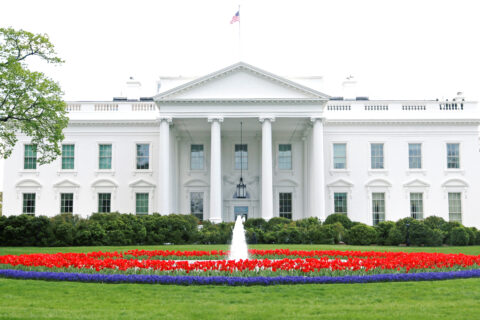Cities have common problems and challenges, be it community policing, aging infrastructure or in some cases, constituents asking city halls across the U.S. to address human trafficking. Sometimes it is hard to know what to do on this specific topic, especially when the expertise doesn’t traditionally exist through a role, division or department. Mayor Annise Parker and Mayor Sylvester Turner, from the City of Houston, changed that with the establishment of the first full-time position in the mayor’s cabinet to address human trafficking through a municipal lens in 2015. The City of Houston became a trailblazer in the fight to end human trafficking and has made tremendous strides in combatting and preventing it, garnering national attention along the way. In 2018, the White House recognized Houston as a national model for building anti-trafficking infrastructure at the municipal level with a Presidential Award.
After three and half years of developing its approach, and several informal consultative calls with other cities that had started to reach out, the City of Houston Mayor’s Office, developed a formal two-day immersion program called the Human Trafficking Response Ten/Ten Municipal Fellowship. Eighteen U.S. cities including New York, Los Angeles, San Francisco, Dallas and Austin participated in this program and Houston was tracking over 60 replication efforts across the full list of participating cities. The resource: What to Know: Municipal Response to Human Trafficking Fact Sheet is a by-product of the City of Houston’s Human Trafficking Response Ten/Ten Municipal Fellowship in partnership with the U.S. Department of Health and Human Services’ Office of Trafficking in Persons., It is meant to be a resource to help cities across the U.S. implement solutions to address human trafficking – and affirm that there are common solutions to common problems.
Whether you represent a city of fewer than 5,000 residents or a bustling metropolitan area that is home to millions, the fact sheet can be used to learn from your peers and generate your own initiatives. It’s a response that leverages cities’ regulatory capabilities in addition to its law enforcement capabilities, their ability to raise awareness at scale, fill systematic gaps in services like access to psychological, medical, and long-term housing, address the nexus between natural disasters and mitigating the risk of foreign laborers contributing to rebuilding efforts – and as such – also leading corporate responses to rebuild conscientiously.
The five objectives in the sheet are each accompanied by a series of recommendations and examples, a few of which can be read below:
Institutionalize a Municipal Response: The Foundation
The goal of this objective is to embed anti-trafficking activity across city departments and have policies in place that increase victim identification or have policies that mitigate against labor trafficking since cities often procure labor. Seven Ten/Ten cities from the east to the west coast and including Houston mobilize city departments through employee training with screening, identification, and reporting functions. Regulations to mandate training across industries like the lodging industry are another example of what cities can do to increase victim identification and public safety.
Expand the Safety Net: A Person-Centered Response Network
To strengthen mechanisms and identify human trafficking, Houston conducted outreach to populations vulnerable to labor trafficking in the restaurant industry and workers on city contracts, while cities such as Chicago and Los Angeles trained community violence outreach and prevention specialists on human trafficking and its intersection with other forms of violence.
Maximize Impact Through Diverse Partners: Public-Private Partnership
There are several benefits to diversifying funding resources such as sustaining and expanding the municipal response. For example, by partnering with philanthropists, the City of Houston had access to an external funding committee to coordinate funding that maximizes resources and creates a one-stop-shop for local nonprofit and community-based organizations to request support. Other cities including Charleston, Chicago, and Los Angeles leveraged federal funding streams (i.e., ARPA, CDBG, and VOCA) to support survivors’ housing and social service needs.
Address Gaps in Perception and Awareness: Outreach and Media Campaigns
In order to reach large and diverse audiences, Houston, Chicago, New York City, and Plainfield, all embedded survivor-informed, trauma-informed, and culturally responsive media messaging on human trafficking where viewership is high using both public service announcement vehicles and paid placements for prime-time viewing, such as movie theaters, radio, television, billboards, taxis, and mass transportation.
Want to learn more? This post has a fraction of the information available in the fact sheet. Cities interested in learning more about these objectives and recommendations, as well as resources and examples can access the full fact sheet here. You can also visit the City of Houston’s site for their three-phase plans here.
About the Authors:
- Minal Patel Davis, Director, City of Houston Mayor’s Office of Human Trafficking and Domestic Violence.
- Chris Graves, Associate Director, City of Houston Mayor’s Office of Human Trafficking and Domestic Violence.







